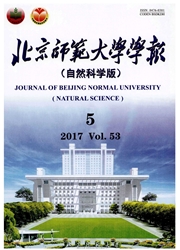

 中文摘要:
中文摘要:
采用双向指示种分析(TWINSPAN)除趋势对应分析(DCA)对京西百花山植物群落进行数量分类和排序,并进行了环境解释.TWINSPAN等级分类将百花山50个样方分为10类,代表10个群系.DCA结果同TWINSPAN分析结果比较一致,并且较好地反映了植物群系和环境之间的关系,其中第1轴明显地反映出各个群系的水热梯度的变化,同时也反映出坡向的变化趋势;而第2轴则反映出海拔的梯度变化,表明群系所在地的海拔是决定群系分布的主要环境因素.
 英文摘要:
英文摘要:
Based on the field survey of plant quadrats, a quantitative analysis of the communities on Baihua Mountains, western Beijing is performed with TWINSPAN (two-way indicator species analysis) and DCA (detrended correspondence analysis) methods. 50 quadrats collected from Baihua Mountains are classified into 10 types, representing 10 formations by TWINSPAN. The gathered groups of plant quadrates in the space of DCA ordination are consistent with the result of TWlNSPAN, and this revealed a relationship between plant formations and environmental gradients. The axis 1 of the two-dimensional ordination diagram of DCA obviously reflects the gradient changes of elevation, humidity and temperature, and the trend of aspect. The axis 2 expresses the gradient changes of elevation. It is considered that the major factor that restrict the formation distribution of the mountain is elevation.
 同期刊论文项目
同期刊论文项目
 同项目期刊论文
同项目期刊论文
 期刊信息
期刊信息
